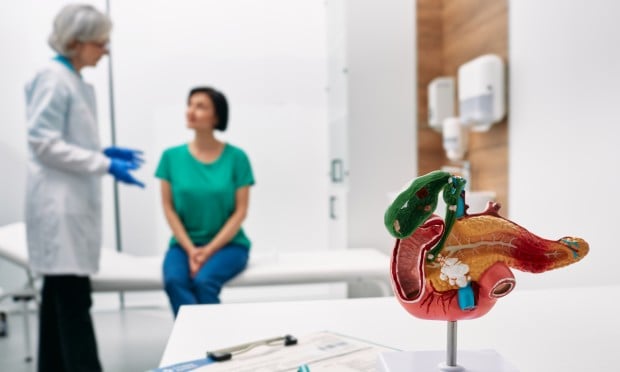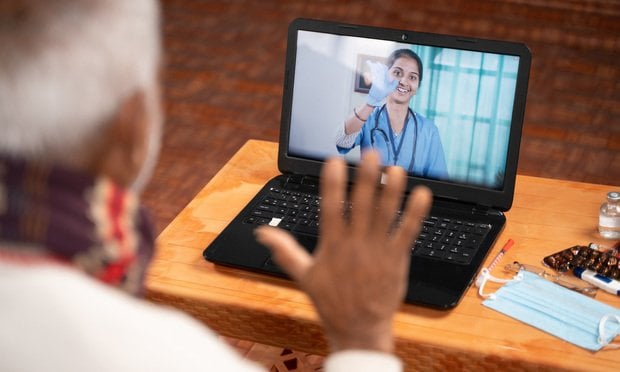Laws designed to equalize out-of-pocket costs faced by cancer patientsundergoing chemotherapy — whether treated intravenously, with pillsor liquid doses — are having mixed results, according to newresearch.
|The study, published online this week by JAMA Oncology, foundthese so-called state “parity” laws have not uniformly reducedpatients’ out-of-pocket spending.
|The laws became popular in the past decade as pricey anti-canceroral medications grew more common. They were intended to addressthe variation in what insurers expected patients to pay, dependingon the form of chemo they received.
|In many plans, oral anti-cancer drugs were placed in highcost-sharing tiers in patients’ prescription coverage. Drug infusions —which took place at a doctor’s office — were handled as an officevisit and sometimes required minimal copayments.
|The researchers analyzed health plan claims of 63,780 adultcancer patients younger than age 65. All lived in the 43 states andthe District of Columbia that passed parity laws from 2008 to2012.
|They compared the use of oral anti-cancer medicinesand out-of-pocket spending between patients in two types ofhealth plans: state-regulated plans and “self-funded” employerhealth plans. The employer plans pay workers’ claims directly andtherefore are not subject to state parity laws. Just under half ofthe patients involved in the study had coverage through aself-funded plan.
|They came to various conclusions.
|First, “these laws have not consistently reduced out-of-pocketspending for orally administered anticancer medications,” theywrote. More broadly, they noted, while these parity laws offeredmany patients “modestly improved financial protection,” the lawsalone “may be insufficient to ensure that patients are protectedfrom high out-of-pocket medication costs.”
|And the researchers were surprised and concerned by thesefindings.
|“When you think about who would have been the target of the law,parity is intended to help people afford the cost of theirtreatment,” said Stacie Dusetzina, an assistant professor ofpharmacy and public health at the University of NorthCarolina-Chapel Hill, who was the study’s lead author. “The mostexpensive fills got more expensive after parity. That’sconcerning.”
||Kaiser Health News, a nonprofit health newsroom whosestories appear in news outlets nationwide, is an editoriallyindependent part of the Kaiser Family Foundation.
||Among their specific findings:
|The number of prescriptions requiring high out-of-pocketspending grew, despite parity laws. The proportion of prescriptionsfilled in plans subject to parity that cost more than $100out-of-pocket per month increased from 8.4 to11.1 percent, the study found. That figure declined slightlyfor prescriptions in plans that weren’t subject to parity, from 12to 11.7 percent. In plans subject to parity laws, the proportion ofprescription fills for orally administered therapy withoutcopayment increased from 15 to 53 percent, more than double theincrease in plans not subject to parity. Those plans increased from12 to 18 percent. Parity laws did not increase six-month totalspending for users of any anti-cancer therapy or for users of oralanticancer therapy alone.
|The researchers suggested that continuing growth inhigh-deductible plans and high coinsurance charges may havecontributed to the rise in the number of patients with highout-of-pocket costs for cancer treatment, even in states that haveparity laws.
|The study also found that out-of-pocket spending on infuseddrugs, which are typically older and less expensive than oralanti-cancer therapies, remained stable during the study period andwas unaffected by parity laws.
|A federal law that would extend parity to the seven states thatdon’t have it has been proposed in the past, most recently inMarch. Such a law could also benefit people in self-funded plansthat aren’t subject to state laws, as well as Medicarebeneficiaries.
|“A federal law would potentially provide a lot of benefit,because we do feel parity has a net benefit for patients,”Dusetzina said.
|Kaiser Health News, a nonprofit health newsroom whosestories appear in news outlets nationwide, is an editoriallyindependent part of the Kaiser Family Foundation. Please visitkhn.org/columnists tosend comments or ideas for future topics for the Insuring YourHealth column.
Complete your profile to continue reading and get FREE access to BenefitsPRO, part of your ALM digital membership.
Your access to unlimited BenefitsPRO content isn’t changing.
Once you are an ALM digital member, you’ll receive:
- Critical BenefitsPRO information including cutting edge post-reform success strategies, access to educational webcasts and videos, resources from industry leaders, and informative Newsletters.
- Exclusive discounts on ALM, BenefitsPRO magazine and BenefitsPRO.com events
- Access to other award-winning ALM websites including ThinkAdvisor.com and Law.com
Already have an account? Sign In
© 2024 ALM Global, LLC, All Rights Reserved. Request academic re-use from www.copyright.com. All other uses, submit a request to [email protected]. For more information visit Asset & Logo Licensing.








